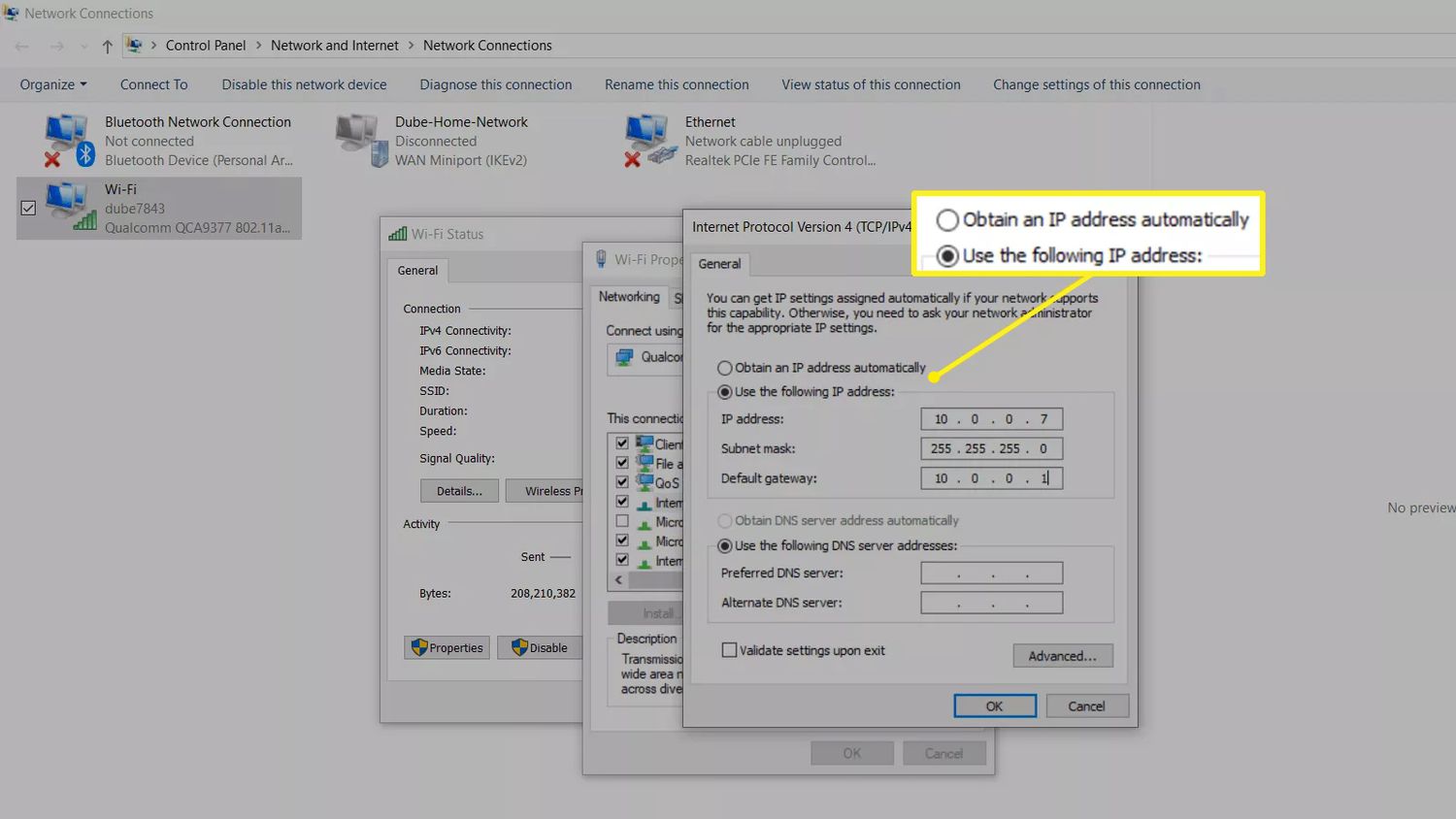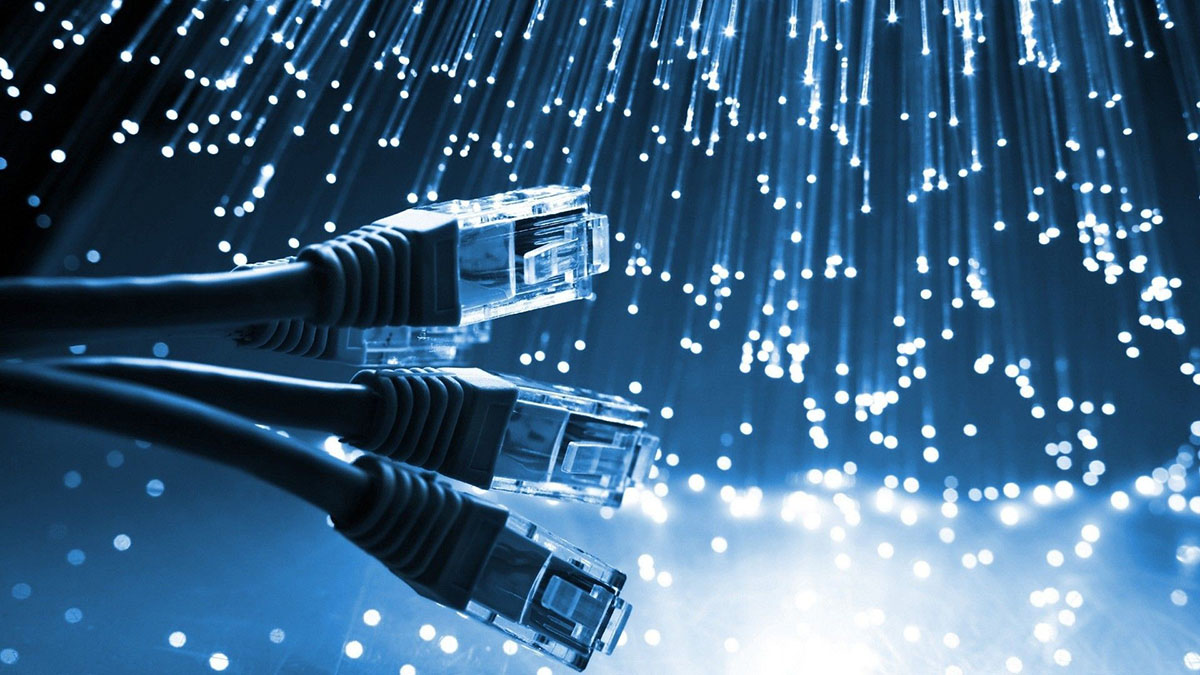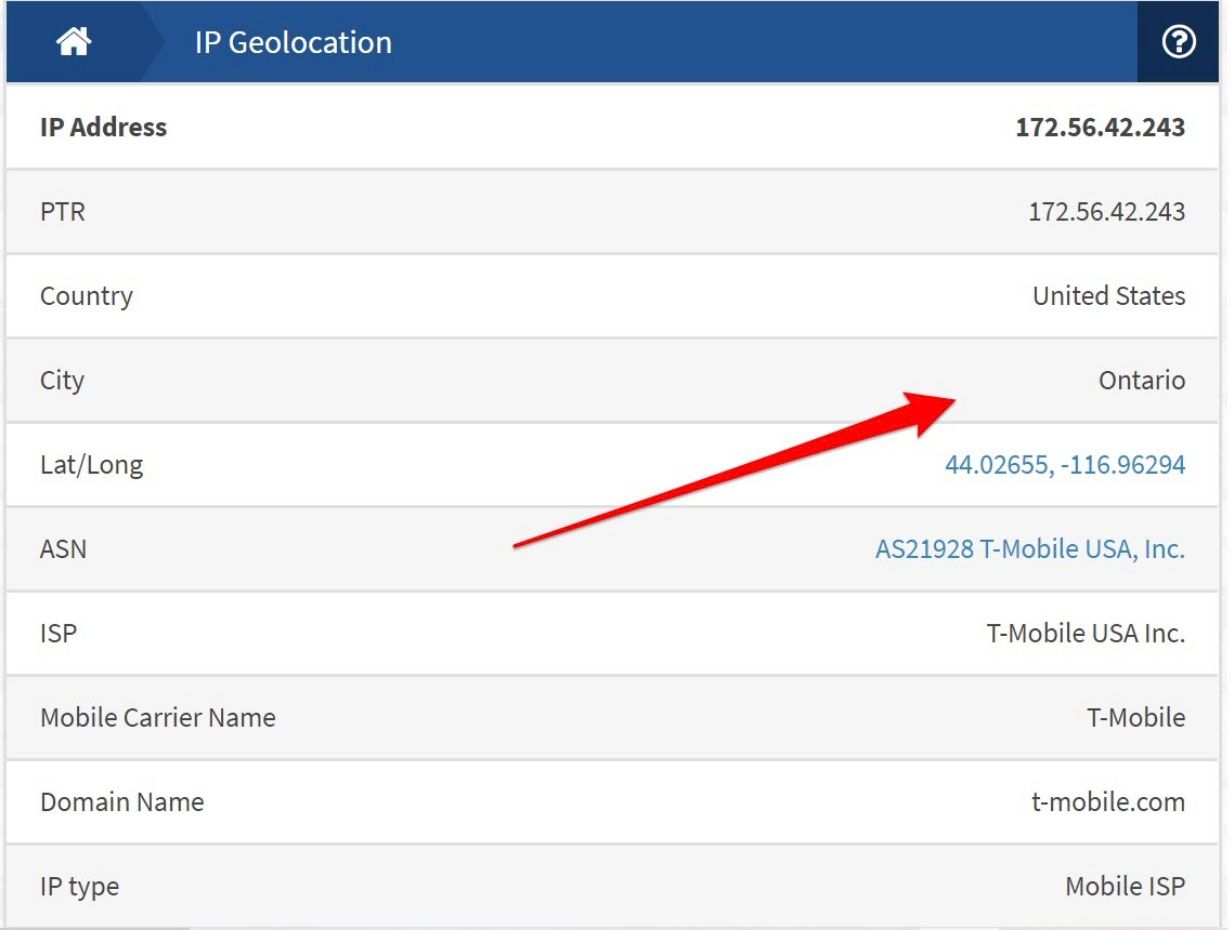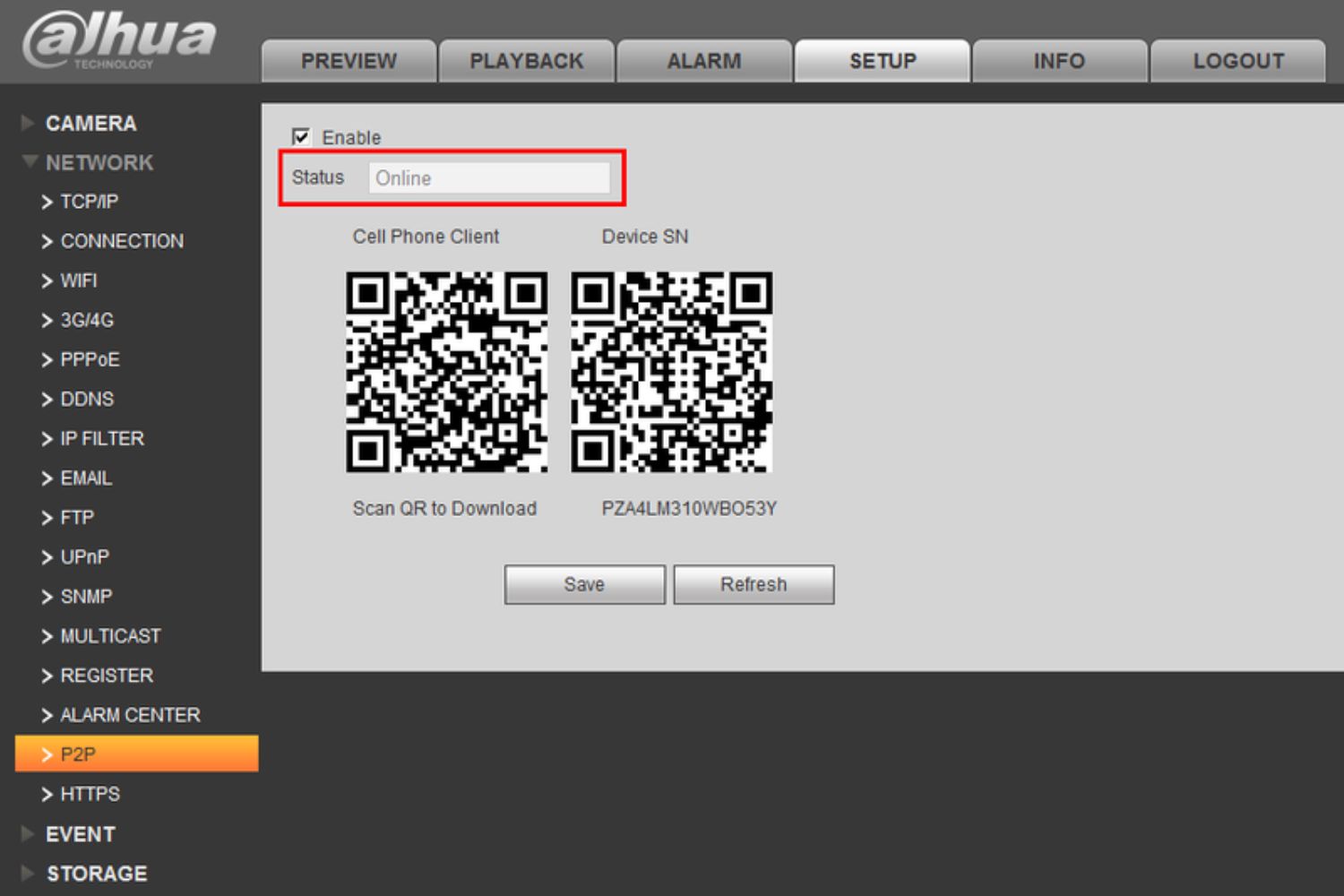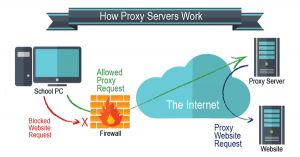Introduction
Have you ever experienced a sudden change in your IP address and wondered why it happens? In today’s digital age, where we rely heavily on the internet for communication, entertainment, and work, understanding how IP addresses work is essential. An IP address serves as a unique identifier for devices connected to a network, allowing them to communicate with each other and exchange data.
In this article, we will explore what an IP address is, how it functions, and most importantly, why your IP address may change from time to time. By shedding light on the reasons behind these changes, we aim to provide you with a better understanding of this phenomenon.
As internet users, we are accustomed to a certain level of consistency when it comes to our IP addresses. We expect them to remain the same throughout our online sessions. However, there are instances when our IP addresses undergo sudden modifications, leaving us perplexed.
So, why does your IP address change? Let’s delve into the inner workings of IP addresses to uncover the reasons behind these shifts and explore the various factors that can trigger them. From dynamic IP assignments to network router resets and changes made by internet service providers, we will explore the range of explanations that contribute to the fluctuation of IP addresses.
By the end of this article, you will have a deeper understanding of why your IP address may change, empowering you to navigate the ever-evolving landscape of the internet with confidence.
What is an IP Address?
An IP address, or Internet Protocol address, is a unique numerical identifier assigned to each device connected to a network. It acts as the device’s virtual address, allowing it to send and receive information over the internet. Similar to how we use physical addresses to locate homes or businesses, IP addresses enable data to be routed to the correct destination.
IP addresses comprise a series of numbers separated by periods. There are two types of IP addresses: IPv4 (Internet Protocol version 4) and IPv6 (Internet Protocol version 6). IPv4 addresses are the most common and consist of four sets of numbers, each ranging from 0 to 255. For example, an IPv4 address could look like this: 192.168.0.1.
On the other hand, IPv6 addresses are designed to address the limitation of available IPv4 addresses. They use a hexadecimal format and are significantly longer, consisting of eight sets of four hexadecimal digits. An example of an IPv6 address is 2001:0db8:85a3:0000:0000:8a2e:0370:7334.
IP addresses serve multiple purposes in the digital realm. They not only enable devices to communicate with each other but also facilitate the connection between devices and websites or web services. Every website on the internet is associated with an IP address, making it accessible to users across the world. To simplify the browsing experience, domain names are used as human-readable alternatives to remember websites. When we enter a domain name in our web browser, it is translated into its corresponding IP address through a process called DNS (Domain Name System) resolution.
Overall, IP addresses play a critical role in maintaining the functionality and connectivity of the internet. They ensure that data is transmitted accurately and efficiently between devices, enabling seamless communication and information exchange.
How Does an IP Address Work?
To understand how an IP address works, it’s essential to grasp the basic mechanism of data transmission over the internet. When you send or receive information, such as visiting a website or streaming a video, the data is broken down into small packets. These packets contain both the data and the necessary addressing information.
When a device wants to send a packet of data, it includes the IP address of the recipient device in the packet’s header. This address acts as the digital destination, indicating where the packet needs to be delivered. The device’s IP address is a crucial factor in determining the path the packet will take through the network.
Once the packet is ready to be sent, it traverses through various routers and switches across the internet, following a series of predetermined routes. Each network device along the way examines the packet’s destination IP address and makes decisions on how to forward it based on routing tables and protocols.
Upon reaching the destination network, the packet is further routed to the specific device based on the IP address contained within it. This process of routing and forwarding continues until the packet finally arrives at the intended recipient device.
It’s important to note that IP addresses are assigned hierarchically, with certain portions indicating the network and others identifying the individual device. This hierarchical structure enables efficient routing and ensures that packets are delivered to the correct device within the network.
In addition to facilitating data transmission, IP addresses also provide information about the geographical location of a device. By analyzing the IP address, it is possible to determine the country, region, and even approximate city where the device is located. This information can be useful for various purposes, such as targeting localized content or enhancing security measures.
Overall, IP addresses serve as the backbone of internet communication, enabling devices to identify and connect with each other. Through a complex network of routers and switches, packets of data are efficiently routed to their destinations based on the IP addresses contained within them.
Why Does My IP Address Change?
If you’ve noticed that your IP address changes from time to time, you may be wondering why this occurs. The dynamic and ever-changing nature of IP addresses is primarily attributed to the way they are assigned and managed.
Dynamic IP Addresses:
One common reason for IP address changes is the use of dynamic IP addresses. Dynamic IP addressing is a method where IP addresses are assigned to devices temporarily. Unlike static IP addresses that remain constant, dynamic IP addresses may vary each time a device connects to the network or when the lease duration expires.
DHCP and IP Address Assignment:
In most cases, IP addresses are assigned through a protocol called DHCP (Dynamic Host Configuration Protocol). When a device connects to a network, it sends a DHCP request to a DHCP server, which then assigns an available IP address to the device for a specific period. Once the lease duration expires or the device disconnects, the IP address is released back into the pool of available addresses.
Reasons for IP Address Change:
There are several factors that can trigger an IP address change:
- Network Router Resets: When you restart your network router or experience a power outage, the router may reset its configuration. This can lead to a new IP address assignment for connected devices.
- Internet Service Provider (ISP) Configuration Changes: Your ISP may periodically make changes to their network infrastructure or services, which can result in IP address modifications for their subscribers.
- Connecting to a Different Network: If you connect to a different network, whether it’s a public Wi-Fi hotspot or a different home network, your device will obtain a new IP address assigned by that network.
- IP Address Release and Renew: In some cases, you may manually release and renew your IP address configuration. This can be done through your device’s network settings or by restarting the network connection.
- IP Address Lease Expiration: If the lease duration for your dynamic IP address expires, your device will request a new IP address from the DHCP server when it reconnects to the network.
These are just a few examples of why your IP address may change. Keep in mind that the exact reason for an IP address change will depend on various factors, such as your network configuration, ISP policies, and network equipment settings.
By understanding the dynamic nature of IP addresses and the factors that contribute to their changes, you can better navigate situations where your IP address may be different than before. It is also worth noting that IP address changes generally have no impact on your browsing experience or the functionality of your internet-connected devices.
Dynamic IP Addresses
Dynamic IP addressing is a commonly used method for assigning IP addresses to devices connected to a network. Unlike static IP addresses, which remain constant, dynamic IP addresses are temporary and subject to change. This dynamic nature allows network administrators to efficiently manage and allocate IP addresses within their network.
Dynamic IP addressing operates through the use of a DHCP (Dynamic Host Configuration Protocol) server. When a device connects to a network, it sends a DHCP request to the DHCP server, which then assigns an available IP address to the device for a specified lease period. This lease period can vary, but it is typically a few hours to a few days.
One of the advantages of dynamic IP addressing is its scalability. With dynamic IP addresses, a network can accommodate a large number of devices without requiring a unique and fixed IP address for each one. This is particularly useful in scenarios where devices frequently join and leave the network, such as in public Wi-Fi networks or corporate environments.
Dynamic IP addressing also offers enhanced flexibility. It allows devices to easily move between networks without requiring manual reconfiguration of IP settings. For example, when you connect your laptop to a different Wi-Fi network at a coffee shop, your device will automatically obtain a new IP address from the new network’s DHCP server. This automatic allocation eliminates the need for manual configuration and simplifies the process of connecting to different networks.
While dynamic IP addressing provides numerous benefits, there are a few considerations to keep in mind. Since IP addresses are not permanently assigned to devices, it can be more challenging to establish direct communication with a specific device on the network. In cases where you need to access a device consistently, such as setting up a home server or remote access, it is often advisable to use a static IP address or dynamic DNS (Domain Name System) services.
Additionally, it’s important to note that dynamic IP addresses can potentially change even during an active session. If your device remains connected to the network for an extended period beyond the lease duration, it may request a renewal and potentially be assigned a different IP address. This occasional change can impact certain applications or services that rely on a consistently available IP address for proper functioning.
In summary, dynamic IP addressing is a flexible and scalable method of IP assignment, allowing network administrators to efficiently manage IP resources. While it provides benefits such as adaptability and simplified network connectivity, it’s important to be aware of potential IP address changes and consider alternative methods, such as static IP addressing or dynamic DNS services, for specific use cases that require consistent access to a device.
DHCP and IP Address Assignment
The Dynamic Host Configuration Protocol (DHCP) is a network protocol used to automatically assign IP addresses and other network configuration parameters to devices connected to a network. DHCP simplifies the IP address assignment process and eliminates the need for manual configuration, making it a widely adopted method for IP address assignment.
When a device joins a network, it sends a DHCP request to a DHCP server, typically located on the network’s router or a dedicated server. The DHCP server is responsible for managing a pool of available IP addresses and leasing them to requesting devices for a set period.
During the DHCP process, the server assigns a unique IP address to the device and provides additional network configuration information, such as the subnet mask, default gateway, and DNS (Domain Name System) server addresses. This information is crucial for the device to properly communicate and access resources on the network and the internet.
Here’s a simplified breakdown of the DHCP process:
- Discover: The device broadcasts a DHCP discover message to the network, looking for available DHCP servers.
- Offer: When a DHCP server receives the discover message, it responds with a DHCP offer. This offer includes an available IP address from its IP address pool.
- Request: The device selects one of the offered IP addresses and sends a DHCP request to the server, confirming its choice.
- Acknowledge: The server receives the request and sends a DHCP acknowledge message, finalizing the IP address assignment. The device can now use the assigned IP address and associated network configuration information.
By utilizing DHCP, network administrators can efficiently manage IP address allocation within their network. DHCP allows for dynamic IP addressing, which means IP addresses are not permanently assigned to specific devices. Instead, IP addresses can be reused when devices disconnect or their lease periods expire.
Furthermore, DHCP enables centralized control and configuration management. Network administrators can easily configure DHCP server settings, such as lease durations, IP address ranges, subnet masks, and other parameters, to meet the specific needs of their network.
In some cases, DHCP can also perform additional functions, such as directing devices to specific servers for software updates, providing boot files for network booting, or assigning specific options for devices based on their hardware or device type.
Overall, DHCP plays a crucial role in simplifying the assignment of IP addresses on a network. By automating the process and providing dynamic IP addressing, DHCP allows for efficient IP resource utilization and simplifies network administration. It ensures that devices connected to the network can acquire the necessary network configuration information and access network resources without manual configuration.
Reasons for IP Address Change
IP addresses can change for various reasons, both planned and unplanned. Understanding the reasons behind IP address changes can help you troubleshoot connectivity issues or adapt to network changes effectively. Here are some common reasons why your IP address may change:
- Network Router Resets: When your network router is reset, either intentionally or due to a power outage, it may reassign IP addresses to connected devices. This can result in IP address changes, as the router reconfigures its network settings.
- Internet Service Provider (ISP) Configuration Changes: Internet service providers may periodically modify their network infrastructure or make changes to optimize their services. These changes can trigger IP address modifications for their subscribers as they reallocate IP resources or update their network configurations.
- Connecting to a Different Network: When you switch networks, such as connecting to a different Wi-Fi network or using a network at a different location, your device will obtain a new IP address. Each network has its own DHCP server or IP address assignment system, which assigns IP addresses specific to that network.
- IP Address Release and Renew: In some cases, you may manually release and renew your IP address configuration. This can be done through your device’s network settings or by restarting the network connection. Releasing the IP address allows it to be returned to the available pool of addresses, and renewing it requests a new IP address from the DHCP server.
- IP Address Lease Expiration: Dynamic IP addresses are assigned for a specific lease duration, which is determined by the DHCP server. When the lease duration expires, your device will send a request to renew the IP address, and the DHCP server may assign a new IP address to your device instead.
It’s important to note that IP address changes are generally a normal part of network operations and should not cause significant disruption. Most internet activities, like browsing the web or using online services, will not be affected by IP address changes. However, certain applications or services that rely on a consistent IP address, such as some forms of online gaming or remote access setups, may require additional configuration to accommodate IP address changes.
By understanding these common reasons for IP address changes, you can better adapt to network changes and troubleshoot any connectivity issues that may arise. If you need to ensure consistent access to devices or services, it may be worth considering technologies like static IP addressing or using dynamic DNS (Domain Name System) services for easier access regardless of IP address changes.
Network Router Resets
When it comes to IP address changes, one common reason is the resetting of a network router. A network router serves as the central hub that connects devices within a network and acts as the gateway to the internet. Occasionally, routers may need to be reset for various reasons, either manually by the user or automatically due to power outages or system errors.
When a network router is reset, it goes through a rebooting process and reestablishes its network settings. During this process, the router may decide to reassign IP addresses to the devices connected to it, leading to changes in IP addresses.
There are a few key scenarios where network router resets can occur:
- User-Initiated Resets: Users may choose to reset their routers when troubleshooting network issues or making changes to the router’s configuration. By resetting the router, any stored settings or temporary configurations are cleared, and the router goes back to its default or factory settings.
- Power Outages: Power outages or interruptions can cause a network router to unexpectedly shut down. When power is restored, the router may automatically reset itself as part of the startup process. This ensures that the router initializes with a clean state and avoids potential issues caused by the power outage.
- System Errors or Updates: In some cases, routers may encounter system errors or firmware updates that require a reset to resolve or implement changes. These resets are typically executed automatically by the router’s software to ensure the stability and functionality of the network.
When a network router undergoes a reset, it typically reconfigures its network settings, including DHCP parameters responsible for IP address assignment. As part of this reconfiguration, the router may assign new IP addresses to the devices connected to it.
It’s important to note that network router resets and subsequent IP address changes are usually transparent to users. Most devices will automatically request and receive a new IP address from the router’s DHCP server without any manual intervention. However, devices that require a static IP address or have static IP configurations may need to be updated manually after the reset.
Overall, network router resets can be a common reason why IP addresses change within a network. They are often performed to resolve issues, apply updates, or ensure the stability of the network. These resets initiate a reconfiguration of the router’s network settings, leading to the assignment of new IP addresses to the devices connected to the network.
Internet Service Provider (ISP) Configuration Changes
Internet Service Providers (ISPs) are responsible for the delivery of internet services to their customers. Over time, ISPs may make changes to their network infrastructure, configurations, or services to improve performance, enhance security, or expand their offerings. These changes can result in IP address modifications for their subscribers.
When an ISP makes configuration changes, such as implementing new network protocols, upgrading equipment, or reconfiguring their network architecture, it can have an impact on IP addresses assigned to their customers. Here are a few common scenarios where ISP configuration changes can lead to IP address changes:
- Network Upgrades: ISPs may upgrade their network infrastructure to support faster speeds, increase capacity, or enhance network reliability. During these upgrades, IP address assignments may change as the updated network is configured and optimized.
- IP Resource Allocation: IPs are a limited resource, and ISPs must manage their IP address pools efficiently. As customer demands change or new customers join the network, ISPs may need to reassign IP addresses within their pool, resulting in changes for existing customers.
- Security Enhancements: ISPs continuously work to improve their network security to protect their users and prevent unauthorized access. When implementing new security protocols or making changes to existing ones, IP address changes may occur as part of the reconfiguration process.
- Network Maintenance: Routine network maintenance, including software updates, hardware replacements, or performing network optimizations, can prompt IP address changes. These changes are often temporary and typically occur during planned maintenance windows to minimize disruptions.
During ISP configuration changes, the exact process and impact on IP addresses may vary. In some cases, customers may experience brief interruptions to their internet service while the changes are implemented. When the network services are restored, devices will acquire new IP addresses as part of the DHCP lease renewal process.
In most situations, ISPs strive to minimize disruptions and ensure a smooth transition during configuration changes. They may use techniques such as overlapping IP address ranges or implementing seamless migration procedures to mitigate any potential interruptions.
It’s important to note that, as an end-user, you typically have little control over the ISP’s configuration changes or the resulting IP address modifications. However, these changes are often necessary for the improvement and maintenance of the ISP’s network infrastructure, which in turn benefits the overall internet experience for their customers.
If you encounter persistent issues or significant disruptions due to IP address changes from your ISP, it is recommended to reach out to their technical support for assistance and guidance.
Connecting to a Different Network
One of the common reasons for an IP address change is when you connect to a different network. Whether you are connecting to a public Wi-Fi hotspot, switching Wi-Fi networks at home or work, or using a different internet service provider, each network has its own infrastructure and IP address assignment system.
When you connect to a different network, your device needs to obtain a new IP address specific to that network. This ensures that your device can communicate and access resources within the network and the internet at large.
Here are a few scenarios where connecting to a different network can lead to an IP address change:
- Public Wi-Fi Hotspots: Public Wi-Fi networks, such as those found in hotels, coffee shops, or airports, typically use DHCP to assign IP addresses to devices. When you connect to a different Wi-Fi hotspot, your device will obtain a new IP address from the DHCP server of that network.
- Switching Wi-Fi Networks: If you have multiple Wi-Fi networks at home or work, connecting to a different network will result in a new IP address assignment. Each network has its own DHCP server or IP address allocation system, which will assign a unique IP address to your device.
- Different Internet Service Provider: When you switch to a different internet service provider (ISP), your device will receive a new IP address assigned by the new ISP’s network infrastructure. The IP address assigned by your previous ISP is no longer valid on the new network.
It’s important to note that when connecting to a different network, your device will typically acquire the new IP address automatically through the DHCP process. This means that most devices will handle the IP address change seamlessly without any manual intervention required.
While connecting to a different network triggers an IP address change, it doesn’t mean that your previous IP address disappears or becomes invalid permanently. Each network provides a unique IP address within its own allocated range, ensuring that there is no conflict with IP addresses from other networks.
When you move between networks or switch Wi-Fi connections, it’s important to be aware of how this can impact any ongoing network-related activities. For example, if you were transferring a file or streaming content, the connection may be interrupted temporarily during the IP address change as your device establishes a connection with the new network.
Overall, connecting to a different network requires your device to obtain a new IP address specific to that network. Whether you are using a public Wi-Fi hotspot or switching between Wi-Fi networks at home or work, the new network’s DHCP server or IP address assignment system will assign an appropriate IP address to your device, allowing you to communicate and access resources within the network and the internet.
IP Address Release and Renew
In certain situations, you may need or choose to release and renew your IP address. Releasing an IP address relinquishes the current IP assignment, allowing it to be returned to the available pool of IP addresses. Renewing an IP address involves requesting and obtaining a new IP address from the DHCP server. By performing a release and renew, you can actively trigger an IP address change on your device.
Here are a few scenarios where releasing and renewing an IP address can occur:
- Troubleshooting Connectivity Issues: Releasing and renewing an IP address can be a step in troubleshooting network connection problems. It helps to reset the network configuration, resolve potential conflicts, and acquire a fresh IP address from the DHCP server.
- Network Configuration Changes: When making changes to your network settings or router configuration, releasing and renewing the IP address can ensure that the updated settings are applied correctly and that your device obtains a new IP address with the updated configuration.
- Manually Managing IP Addresses: In certain cases, you may prefer to manually manage your IP address for specific purposes, such as setting up a static IP address assignment. Releasing and renewing the IP address allows you to initiate the process of obtaining a new IP address or returning to dynamic IP addressing.
The process of releasing and renewing an IP address may vary slightly depending on the operating system and device you are using. In most cases, you can perform these actions through your device’s network settings or using the command prompt or terminal.
Releasing the IP address will notify the DHCP server that the assigned IP address is no longer in use and can be released back into the available pool. Once released, your device will no longer be identified by that IP address on the network.
Renewing the IP address initiates a request to the DHCP server for a new IP address assignment. The DHCP server will then assign a new IP address to your device, providing the necessary network configuration information as well.
It’s important to note that releasing and renewing an IP address does not guarantee a new IP address assignment. The DHCP server may assign the same IP address again if it is still available in the pool, or it may assign a different IP address depending on the available addresses and configuration settings.
Releasing and renewing an IP address can temporarily disrupt network connectivity as your device obtains a new IP address and reestablishes network connections. Applications or services that rely on a consistent IP address may experience a brief interruption during this process.
Overall, releasing and renewing an IP address is a useful tool in troubleshooting network issues, applying configuration changes, or manually managing IP address assignments. By initiating this process, your device actively obtains a new IP address from the DHCP server, potentially resolving connectivity problems or allowing for updated network settings to take effect.
IP Address Lease Expiration
IP addresses assigned through dynamic IP addressing are typically leased to devices for a specific period. When this lease duration expires, the device must renew its IP address lease with the DHCP server. If the renewal process doesn’t occur, the IP address may be reclaimed by the DHCP server and subsequently assigned to another device. This scenario is known as IP address lease expiration.
Here’s how IP address lease expiration works:
- IP Address Lease Assignment: When a device connects to a network, the DHCP server assigns it an IP address lease for a predetermined duration. This lease period can vary depending on the DHCP server’s configuration, but it is typically several hours to several days.
- Lease Renewal Process: Before the IP lease expiration, the device is responsible for initiating the lease renewal process. This typically occurs halfway through the lease duration. The device sends a request to the DHCP server, indicating its intent to renew the IP address lease.
- IP Lease Renewal: If the DHCP server receives a lease renewal request from the device, it renews the lease by extending the lease duration. The device keeps the same IP address, and network connectivity continues uninterrupted.
- IP Lease Expiration: If the device fails to initiate the lease renewal process, the lease eventually expires. Upon lease expiration, the IP address is released back into the available pool for reassignment to other devices.
When the lease expires, a device will need to request a new IP address from the DHCP server when it reconnects to the network. The DHCP server may assign the same IP address, if it is still available, or assign a different IP address based on its IP assignment policies and the availability of addresses in its pool.
IP address lease expiration can occur due to various reasons:
- Long Network Disconnection: If a device remains disconnected from the network for an extended period, such as during a prolonged power outage or when a laptop is not in use for an extended time, the IP address lease may expire.
- No Automatic Lease Renewal: In some cases, a device may fail to initiate the lease renewal process automatically. This can happen due to misconfiguration, issues with the DHCP server, or problems with the device’s network settings.
It’s important to note that IP address lease expiration is a natural and expected part of dynamic IP addressing. The DHCP server relies on lease durations to manage and optimize IP address allocations efficiently. By reclaiming unused or expired IP addresses, the DHCP server ensures the availability of IP addresses for other devices connecting to the network.
If you experience an IP address change due to lease expiration, it is usually a seamless process. Most devices, upon reconnection to the network, will acquire a new IP address automatically through the DHCP process. Applications and services typically adjust to the new IP address without requiring manual intervention.
Understanding IP address lease expiration can help you troubleshoot connectivity issues or plan for network changes. If you encounter persistent problems with IP address lease expiration or need to ensure a consistent IP address, you may consider requesting a static IP address from your network administrator or internet service provider.
Conclusion
IP address changes are a common occurrence in the dynamic world of networking. Whether it’s due to the use of dynamic IP addresses, network router resets, ISP configuration changes, connecting to different networks, or IP address lease expiration, understanding the reasons behind IP address changes can help you navigate the ever-changing landscape of the internet.
IP addresses serve as unique identifiers for devices connected to a network, enabling them to communicate and exchange data. They are assigned and managed through protocols like DHCP, which dynamically assigns IP addresses for temporary lease durations. This dynamic nature allows for efficient IP resource utilization and simplifies network administration.
Network router resets can trigger IP address changes as routers reconfigure their network settings. ISP configuration changes can lead to IP address modifications for subscribers as ISPs optimize their network infrastructure. Connecting to a different network requires obtaining a new IP address specific to that network, ensuring proper communication within the new network environment.
Additionally, IP address release and renew processes can also initiate IP address changes, allowing for troubleshooting network connectivity issues or applying network configuration changes. IP address lease expiration occurs when the leased IP address expires, requiring devices to request a new IP address from the DHCP server.
Understanding these reasons for IP address changes empowers you to adapt to network modifications, troubleshoot network issues effectively, and plan for potential interruptions. While IP address changes generally have minimal impact on regular internet activities, it’s important to be aware of any specific applications or services that rely on a consistent IP address.
Ultimately, the constantly evolving nature of IP addresses is a testament to the dynamic and interconnected world of networking. By staying informed and embracing these changes, you can continue to navigate the internet landscape with confidence and maintain uninterrupted connectivity.







